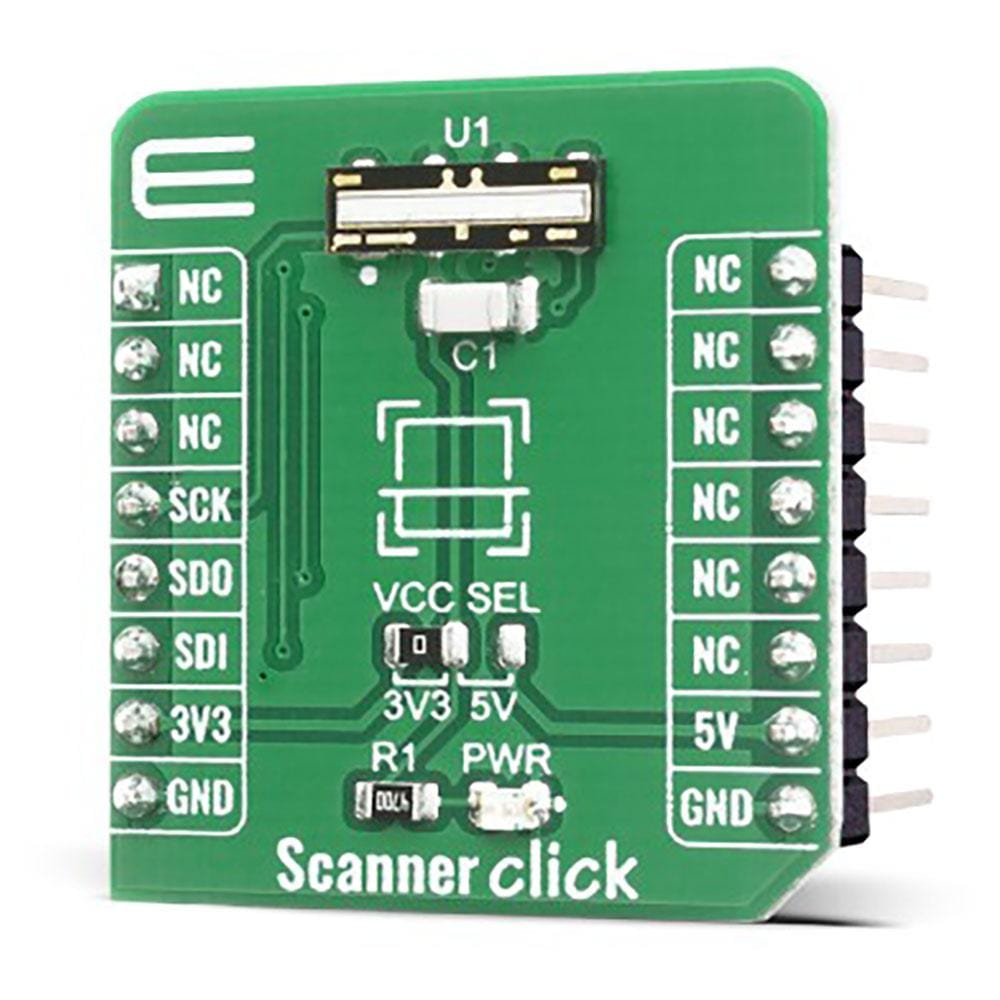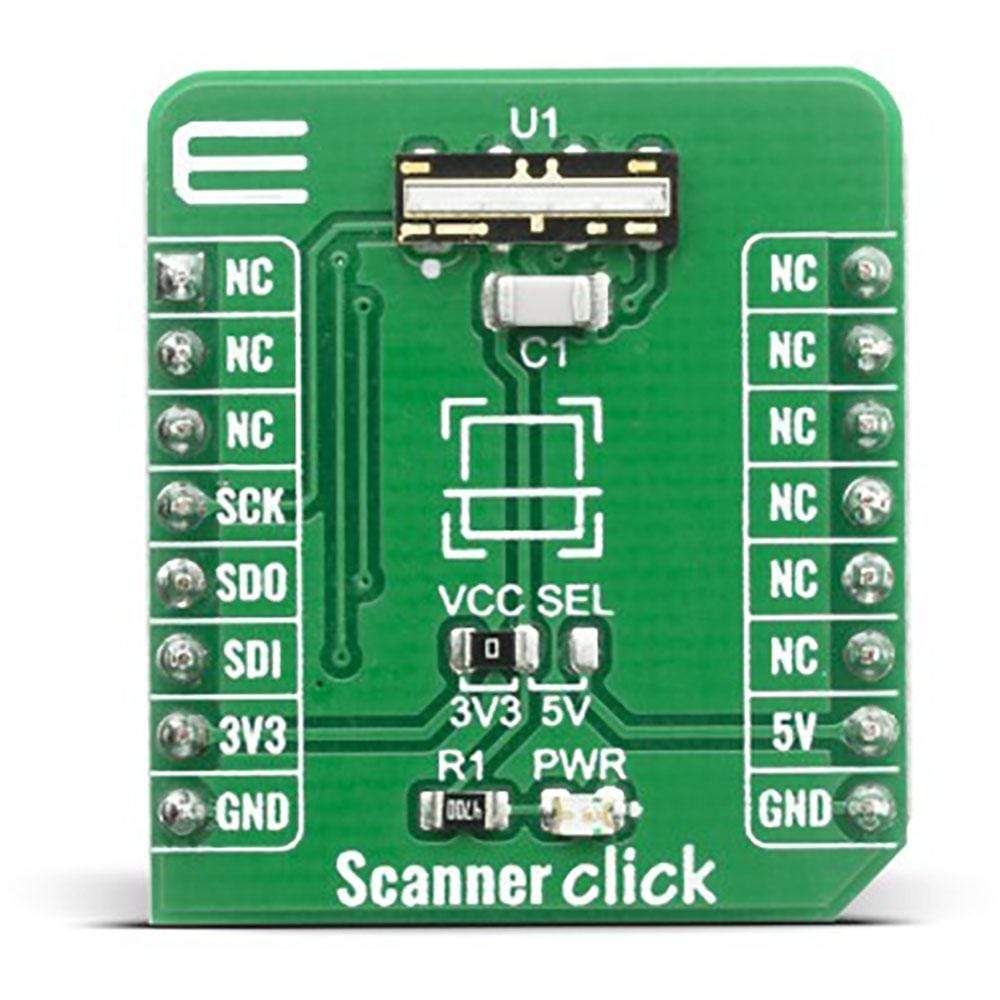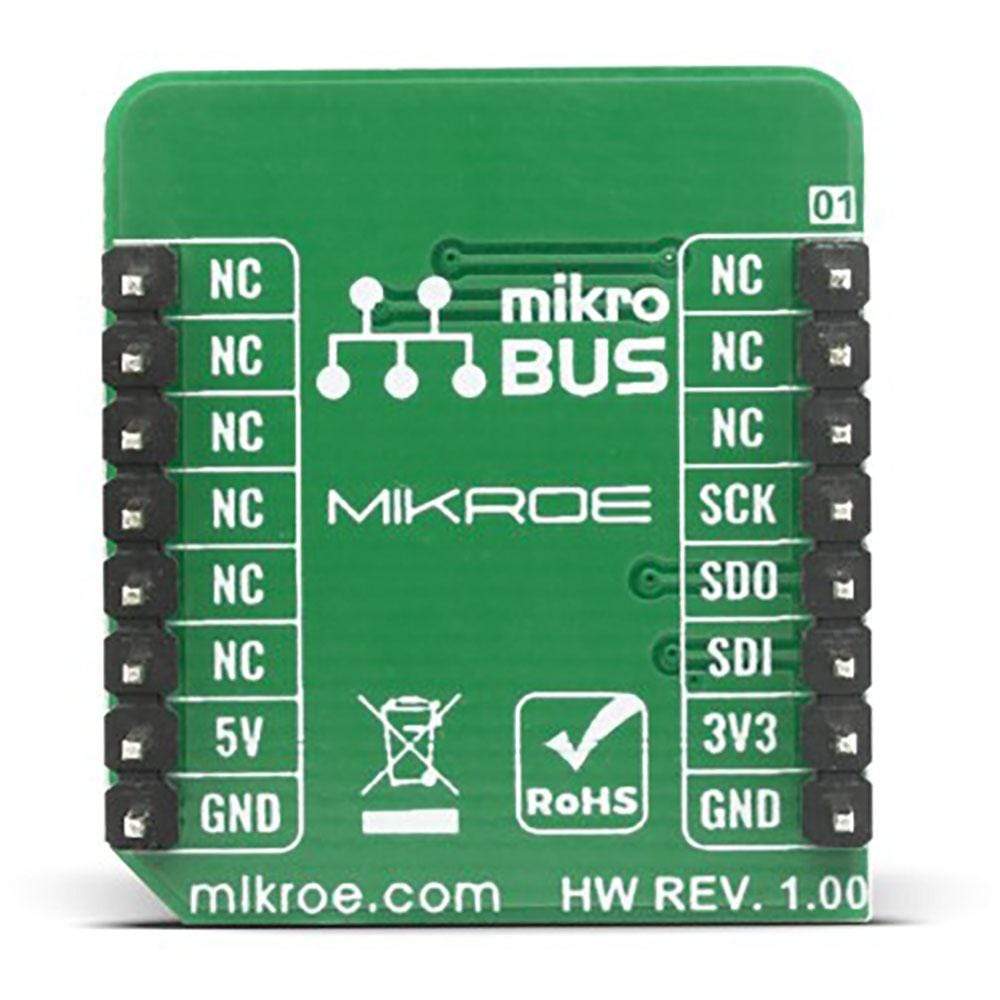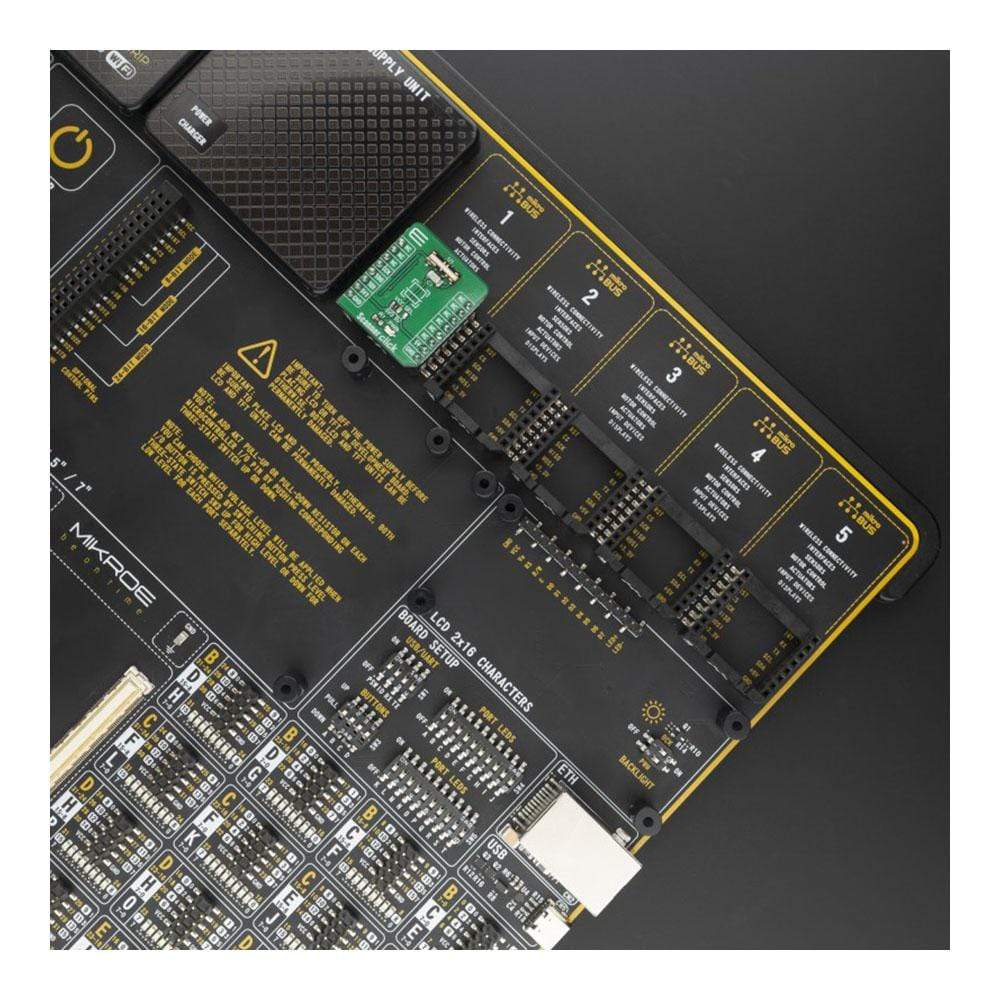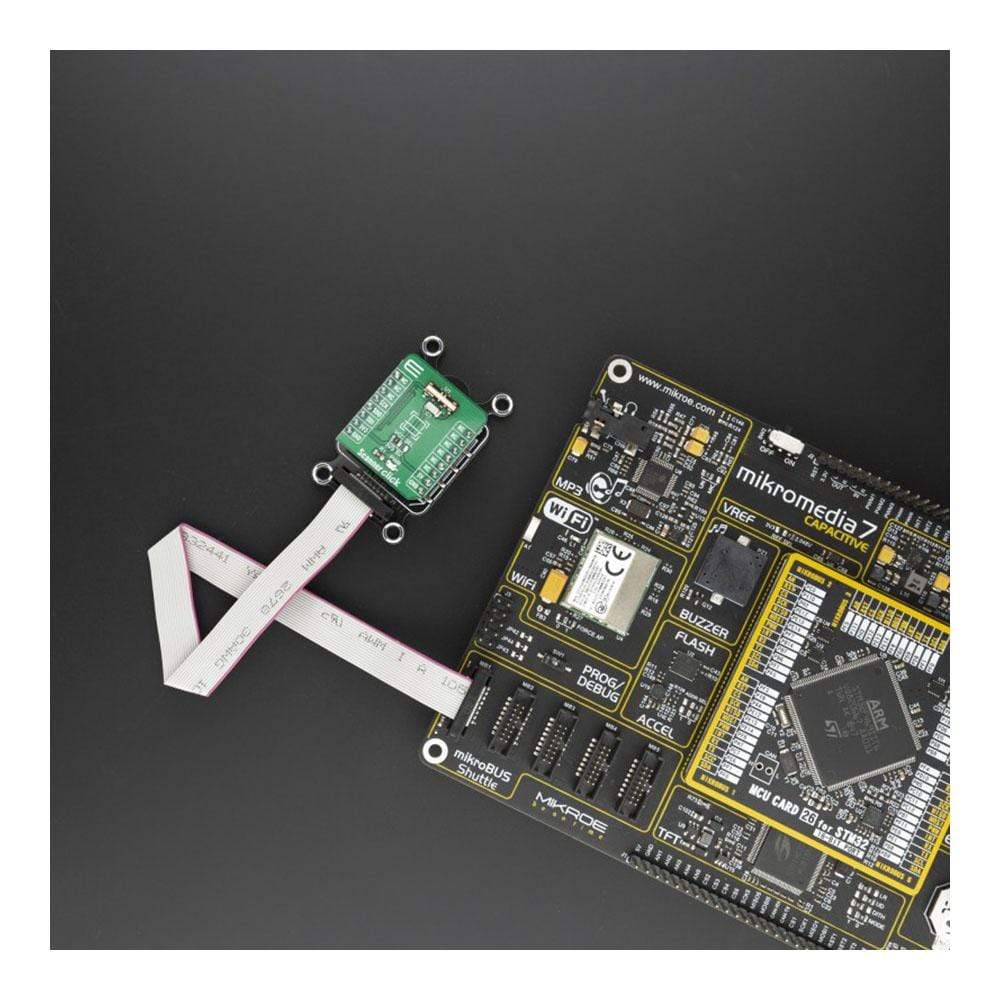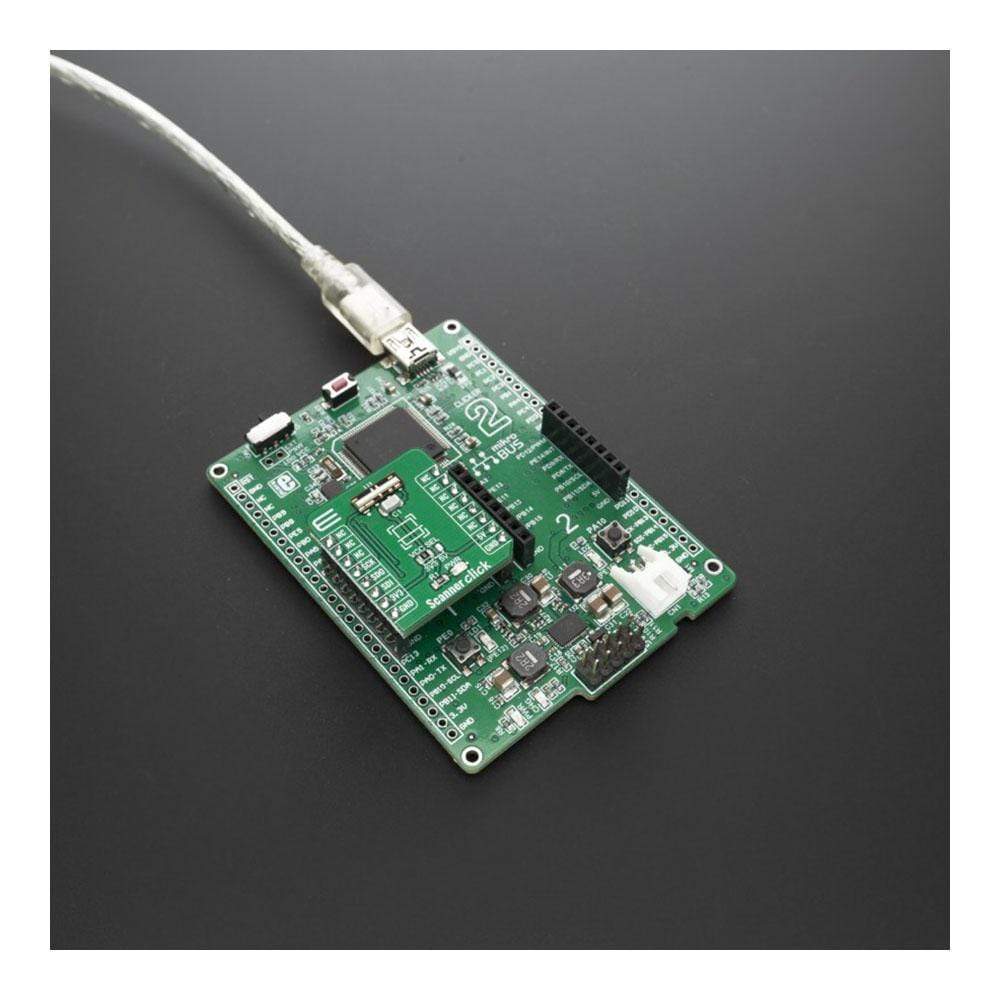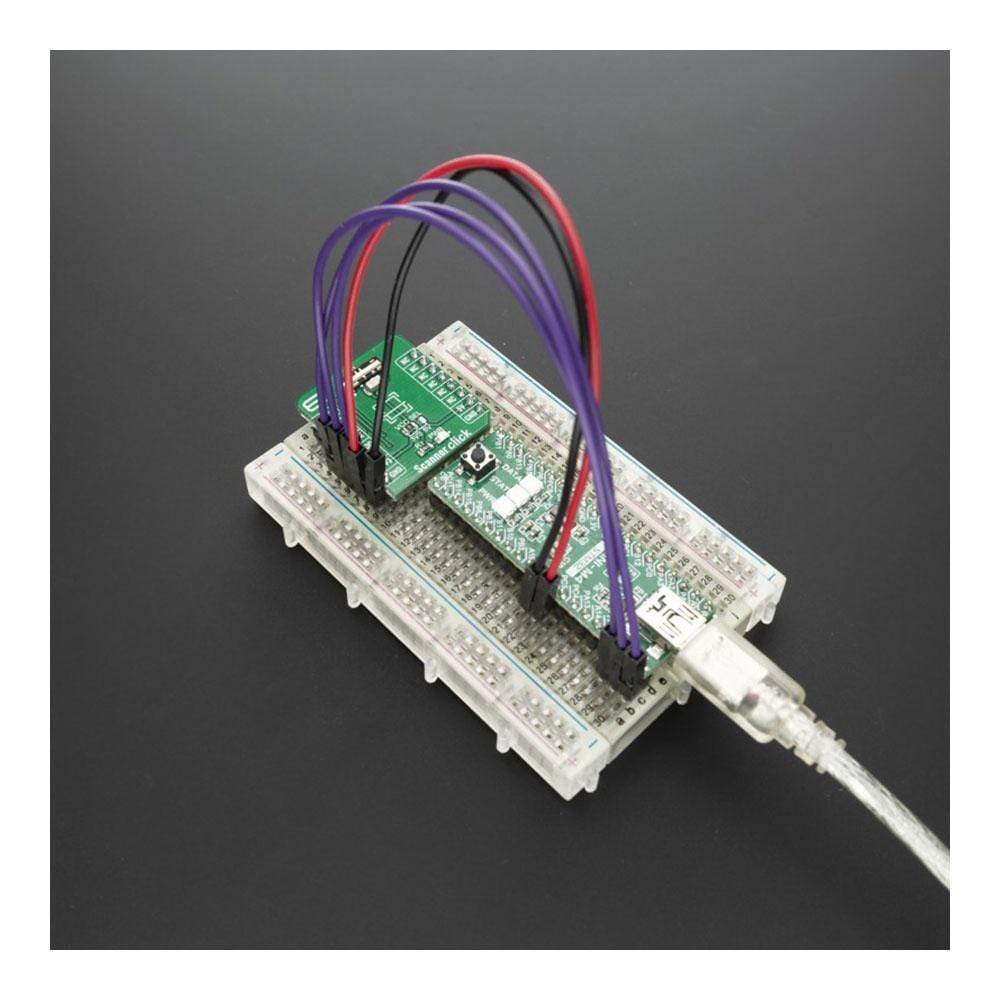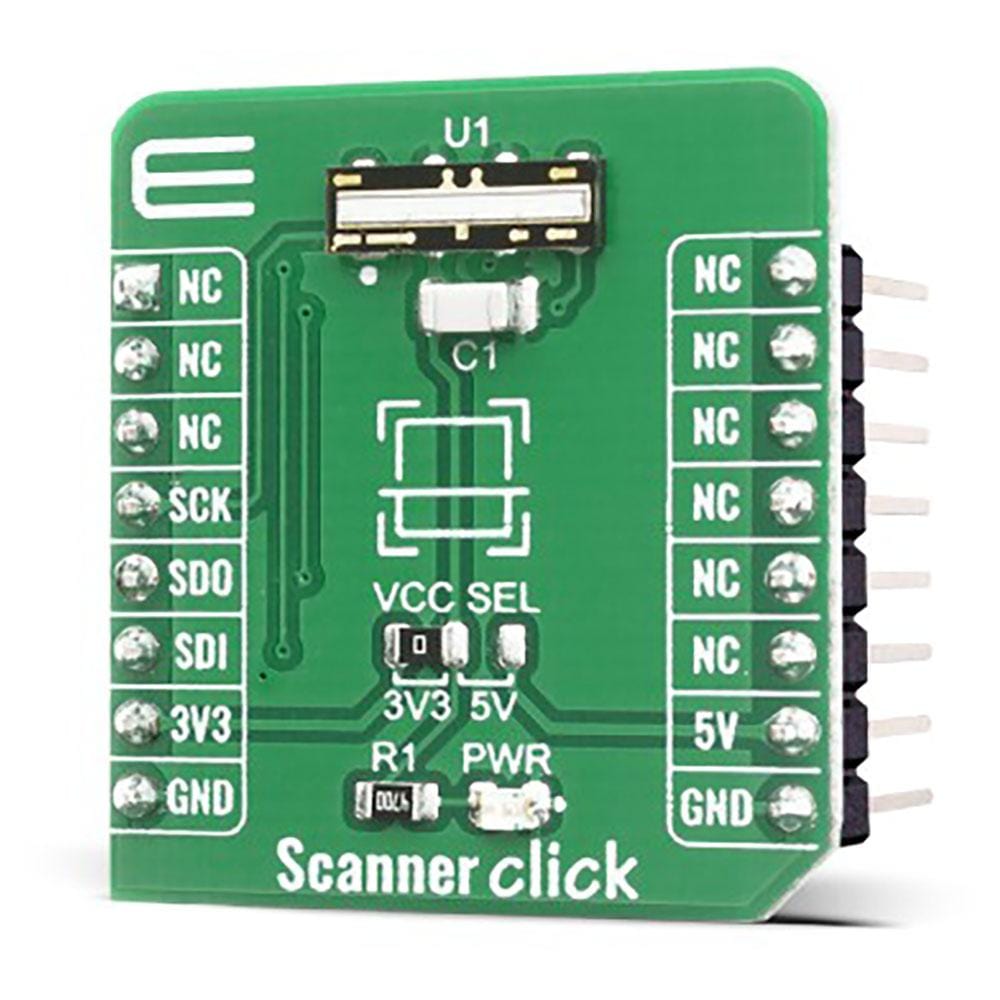
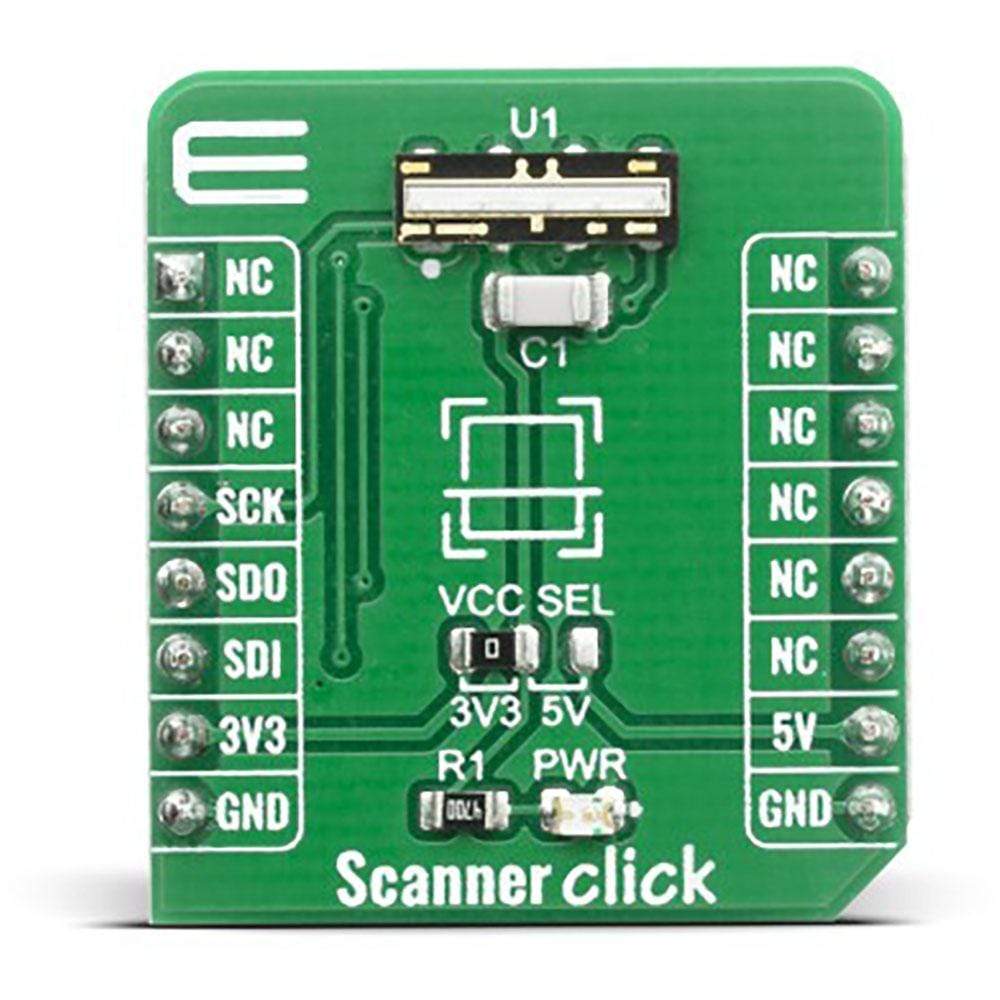
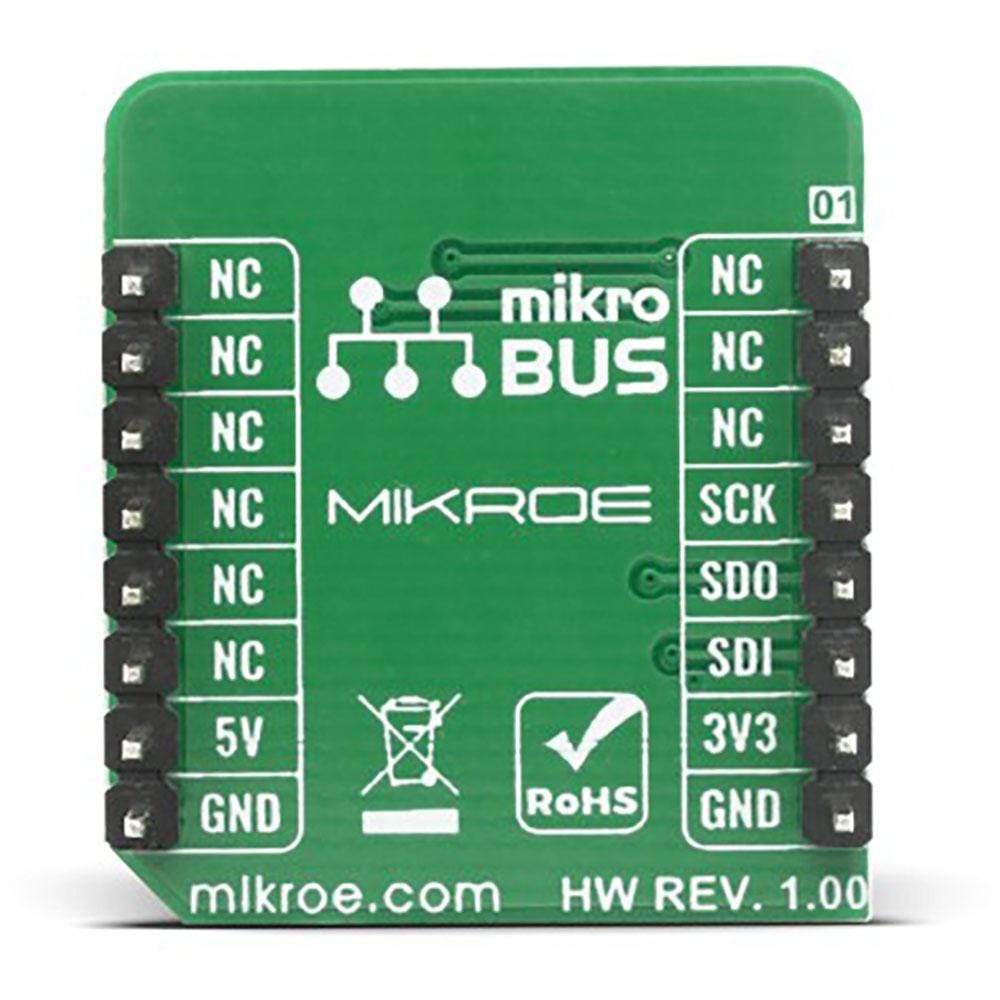
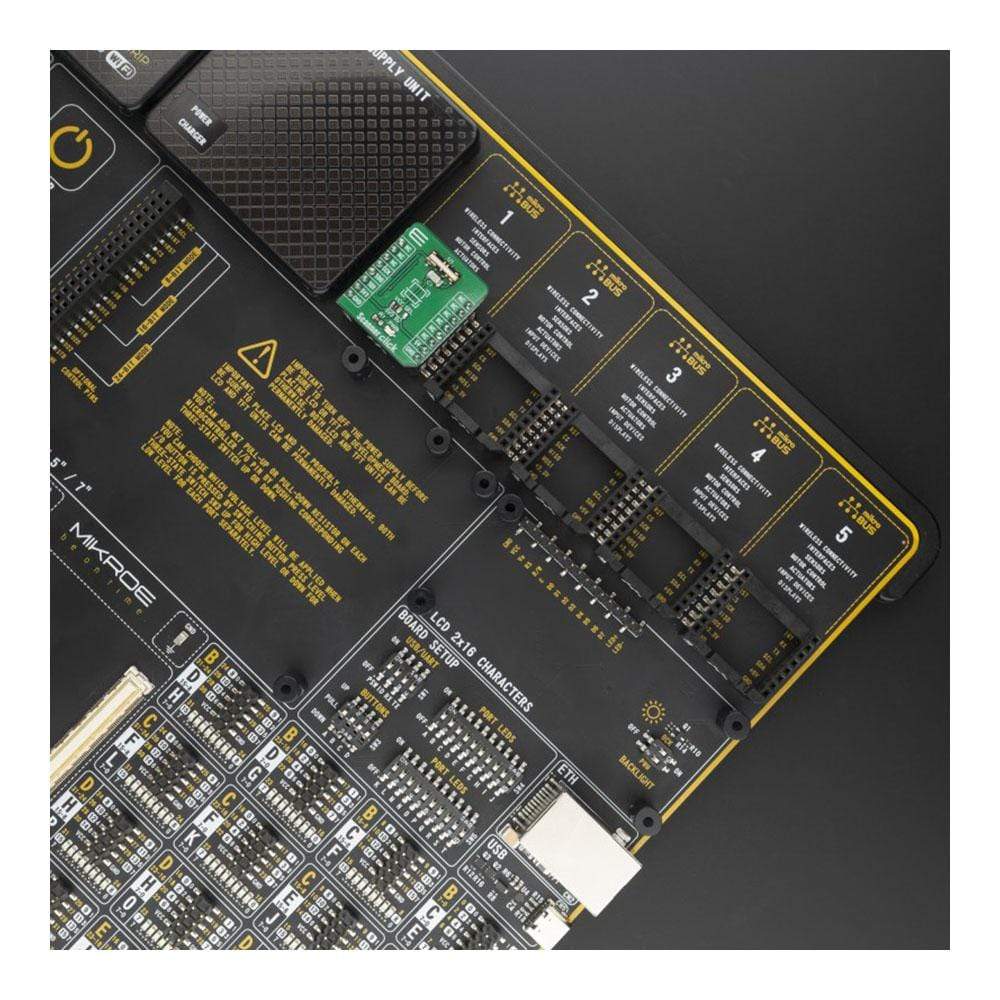
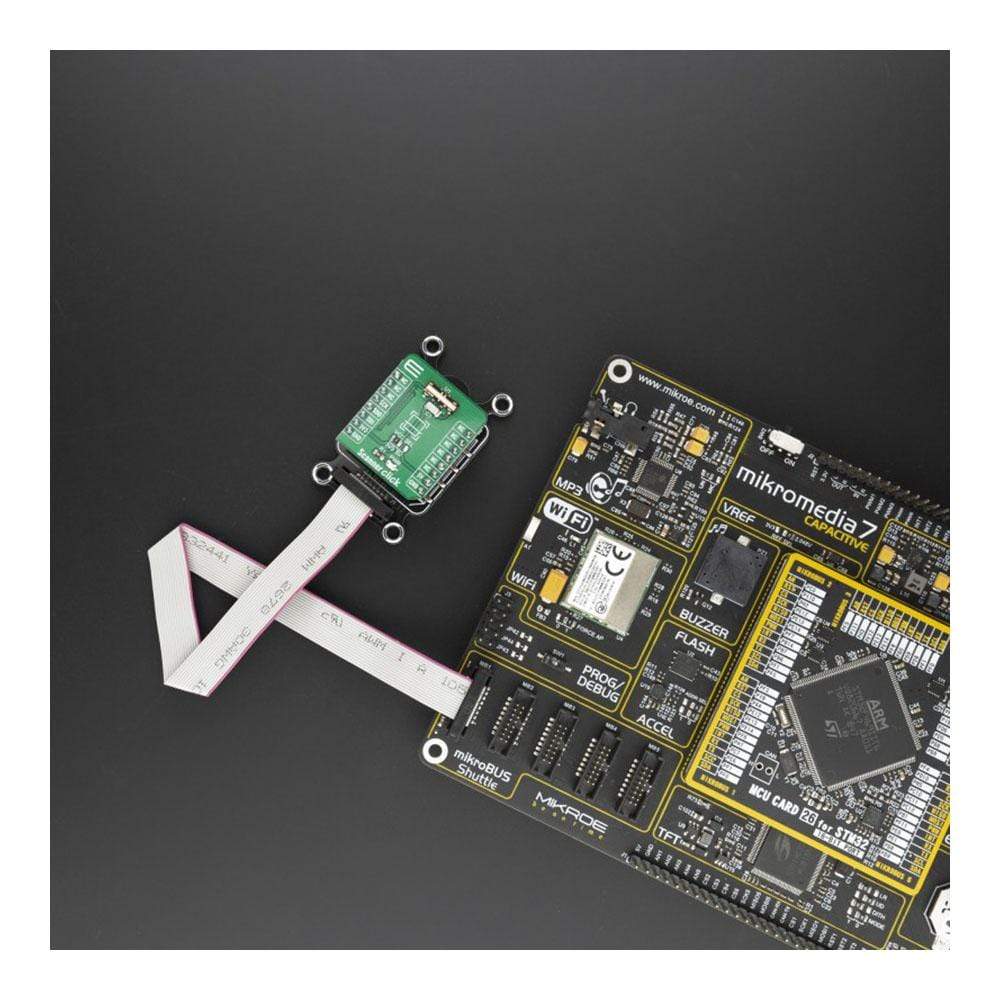
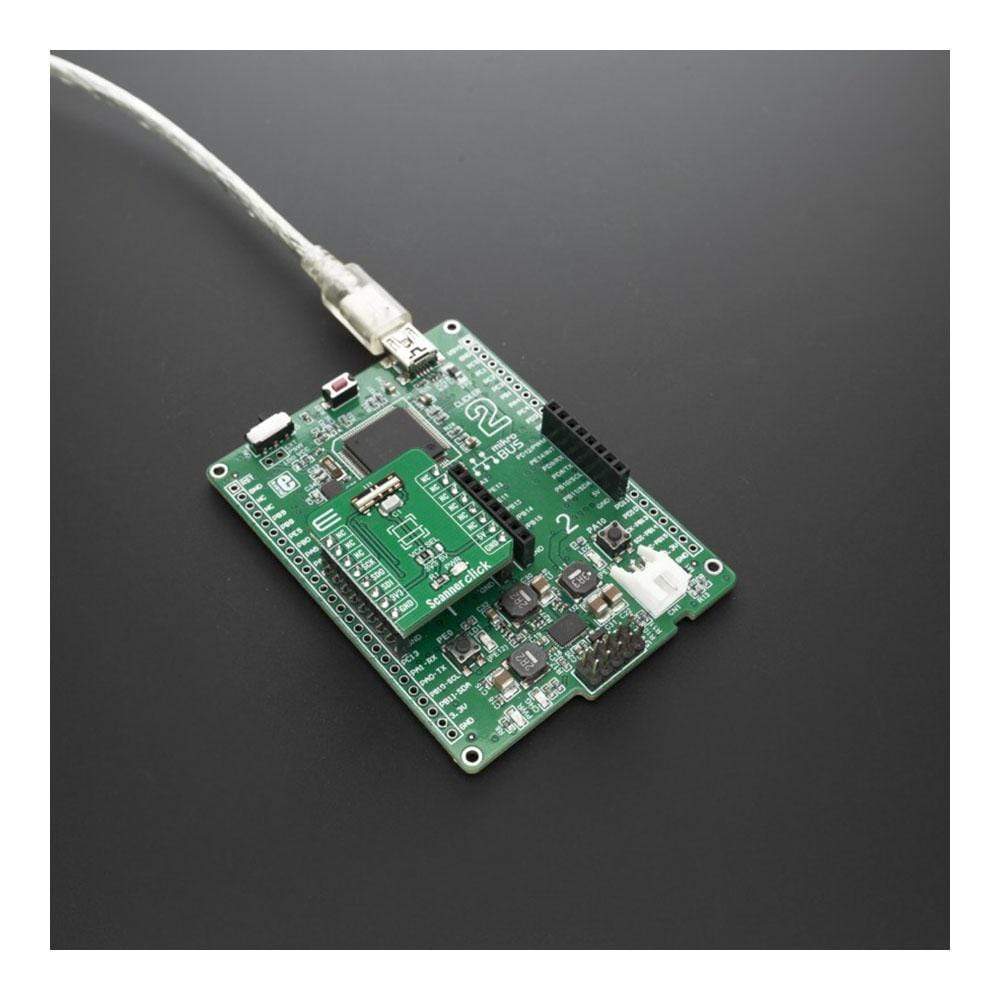
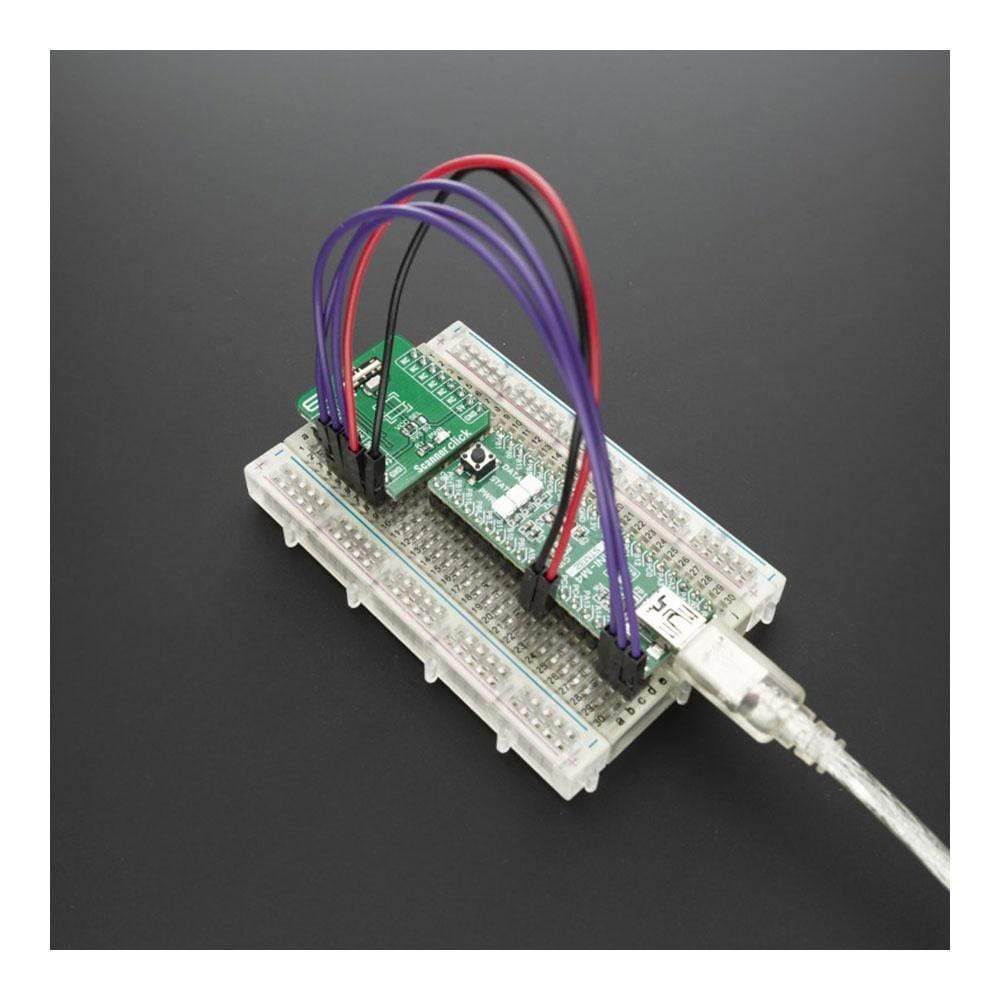
Overview
The Scanner Click Board™ is an optical scanner expansion board for building optical cost-sensitive scanners and printers. The main component of this board is a 102 pixels linear optical array sensor marked TSL3301CL from AMS. For accessing sensor registers from any host controller communication is accomplished through a three-wire SPI high-speed serial interface. This linear optical sensor provides high-density pixel count and integrated analogue-to-digital conversion to the Scanner Click Board™ and also enables high-resolution scanning and scalable operating range. This Click Board™ is most suitable for the applications like scanners, printer edge detects and optical character recognition.
The Scanner Click Board™ is supported by a mikroSDK compliant library, which includes functions that simplify software development. This Click Board™ comes as a fully tested product, ready to be used on a system equipped with the mikroBUS™ socket.
Downloads
La carte Click Board™ pour scanner optique est une carte d'extension pour scanner optique permettant de construire des scanners et des imprimantes optiques à faible coût. Le composant principal de cette carte est un capteur optique linéaire de 102 pixels marqué TSL3301CL d'AMS. Pour accéder aux registres du capteur à partir de n'importe quel contrôleur hôte, la communication s'effectue via une interface série haute vitesse SPI à trois fils. Ce capteur optique linéaire fournit un nombre de pixels haute densité et une conversion analogique-numérique intégrée à la carte Click Board™ pour scanner et permet également une numérisation haute résolution et une plage de fonctionnement évolutive. Cette carte Click Board™ est particulièrement adaptée aux applications telles que les scanners, la détection des bords d'imprimante et la reconnaissance optique de caractères.
Le Scanner Click Board™ est pris en charge par une bibliothèque compatible mikroSDK, qui comprend des fonctions qui simplifient le développement logiciel. Ce Click Board™ est un produit entièrement testé, prêt à être utilisé sur un système équipé du socket mikroBUS™.
| General Information | |
|---|---|
Part Number (SKU) |
MIKROE-4108
|
Manufacturer |
|
| Physical and Mechanical | |
Weight |
0.02 kg
|
| Other | |
Country of Origin |
|
HS Code Customs Tariff code
|
|
EAN |
8606018717552
|
Warranty |
|
Frequently Asked Questions
Have a Question?
Be the first to ask a question about this.

